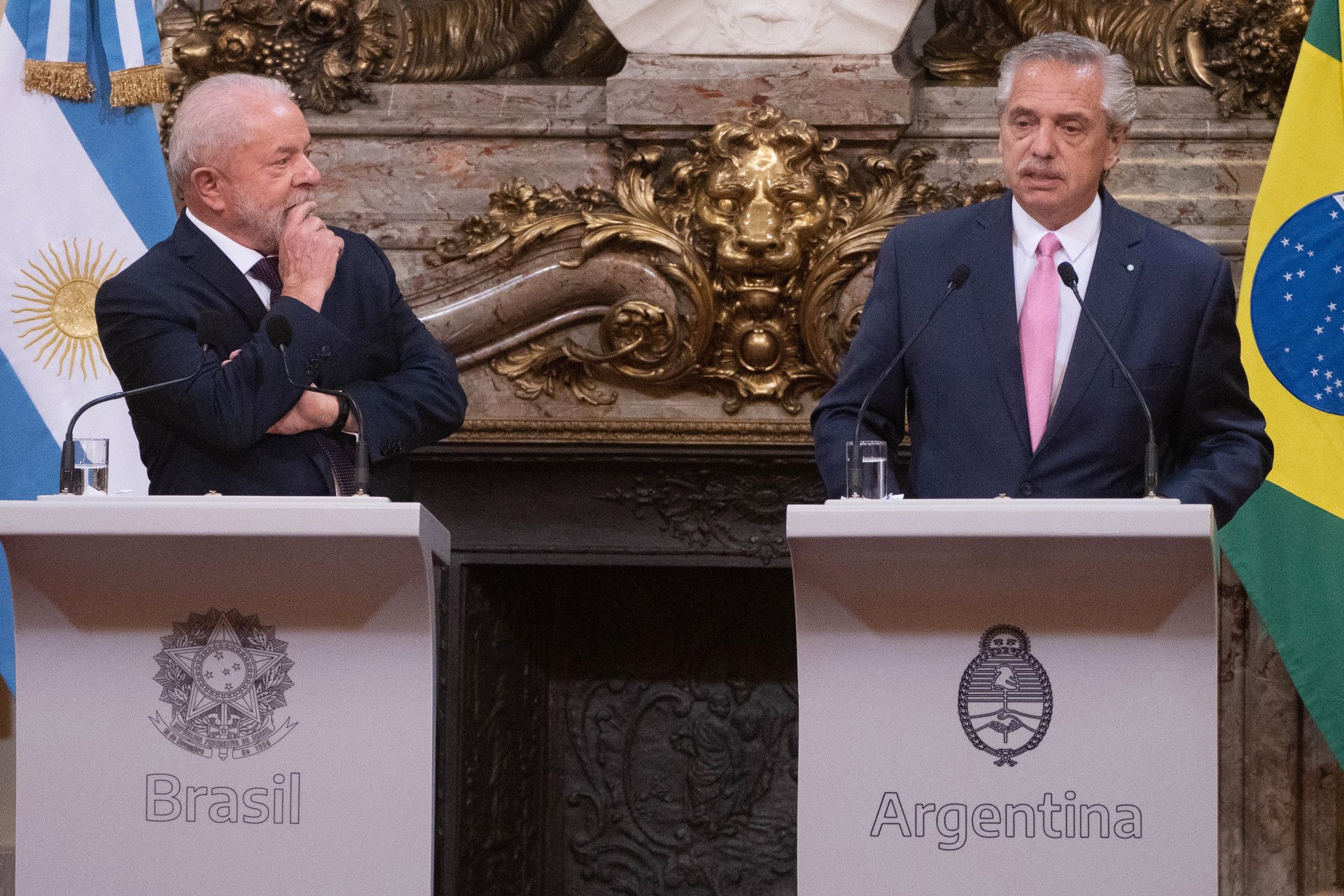Brazil and Argentina are laying the groundwork for a Latin American currency to rival the US dollar
The two largest economies in the region stressed the importance of local currencies ahead of the CELAC conference in Buenos Aires

The presidents of Brazil and Argentina are considering creating a common Latin American currency.
Presidents Lula Ignacio de Silva of Brazil and Alberto Fernandez of Argentina announced the discussions at the Community of Latin American and Caribbean States (CELAC) conference this week in Buenos Aires, reviving a perennial proposal to challenge the US dollar’s dominance in the region.
In an article published in Perfil, an Argentinian newspaper, presidents Lula and Fernandez wrote their countries are exploring options to create a common currency called the sur (south in Spanish), meant to encourage financial and commercial transactions between the countries. Argentina economic minister Sergio Massa added Brazil and Argentina would invite other countries in Latin America to join, but urged patience, citing the difficulty of trade integration.
The move illustrates how Lula is pushing forward on his campaign promises to foster greater economic interdependence in the region. Elected to office at a time when the majority of Latin American countries have left-wing heads of state—including the region’s five largest economies, Lula and other leaders have close ties, raising the possibility of a new era of collaboration for the rapidly developing countries to counter economic influence by the United States.
The day after the announcement, Brazilian finance minister Fernando Haddad played down the idea of completely overhauling the real, saying the countries were exploring all opportunities to increase trade. In the meantime, Argentina is battling its worst inflation in three decades, while economic growth in Brazil is expected to slow as Lula follows through on plans to boost public spending.
Argentina’s surging inflation rate:
In 1987, the leaders of Brazil and Argentina announced the creation of a “currency unit to enable regional payments,” called the gaucho. Sound familiar?
The idea of a joint currency has long held traction in the region, with populist leaders pointing to the dominance of the dollar as evidence of neo-colonialism. Three countries in Latin America (Ecuador, El Salvador, and Panama) use the greenback as their primary domestic currency, ensuring an outsized American influence in their economies.
However, the formation of a joint currency is not an easy task. Initial negotiations for the European Union’s unified currency took over a decade. And, when the euro was launched in 1999, it was considered an invisible currency for the first three years and only used for accounting purposes and electronic payments. It wasn’t until 2009 that the Lisbon Treaty formed the Eurogroup, the official governing body of the currency.
Demand for an alternative to the US dollar is increasing worldwide, with Russia and China promoting their currencies for international payments, most notably after recent US sanctions on Russia raised the possibility that the dollar could become a tool of political exertion.
Additionally, the dollar’s relative strength in 2022 caused consumer prices and debt-repayment burdens in some regions to rise, with the new government of Myanmar saying the dollar was used to “bully smaller nations.”
Related stories
⛏️ Why Peru’s disgraced ex-president remains popular with indigenous miners